
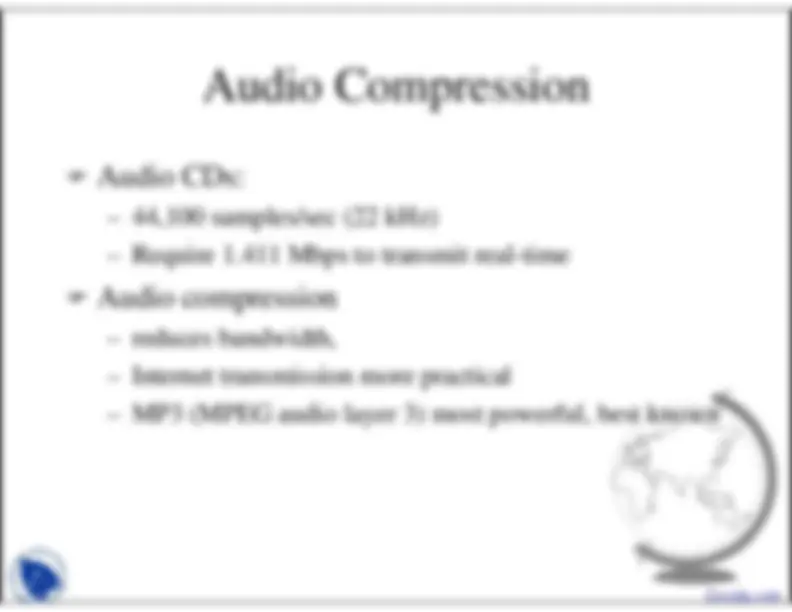
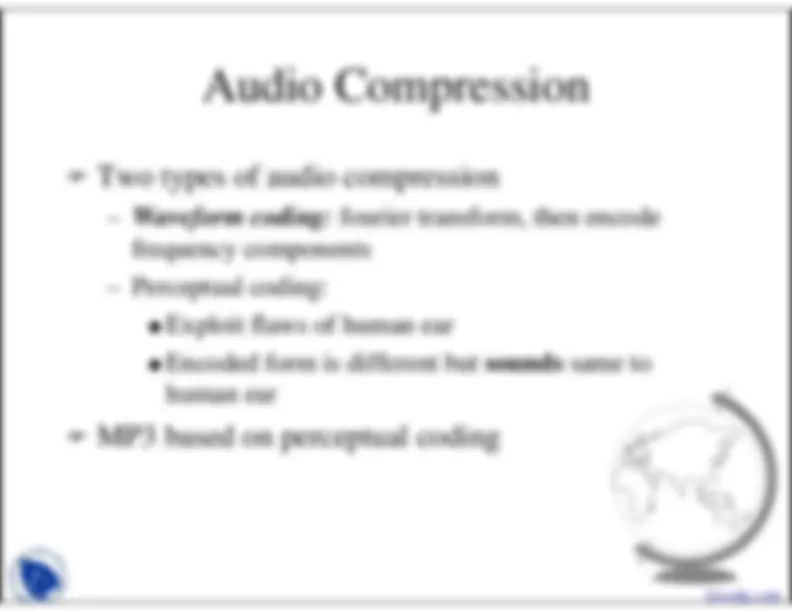
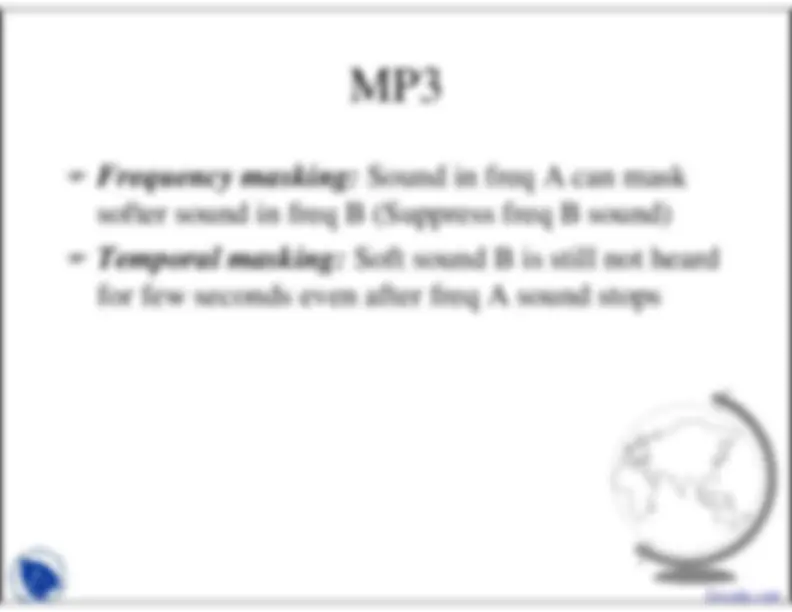
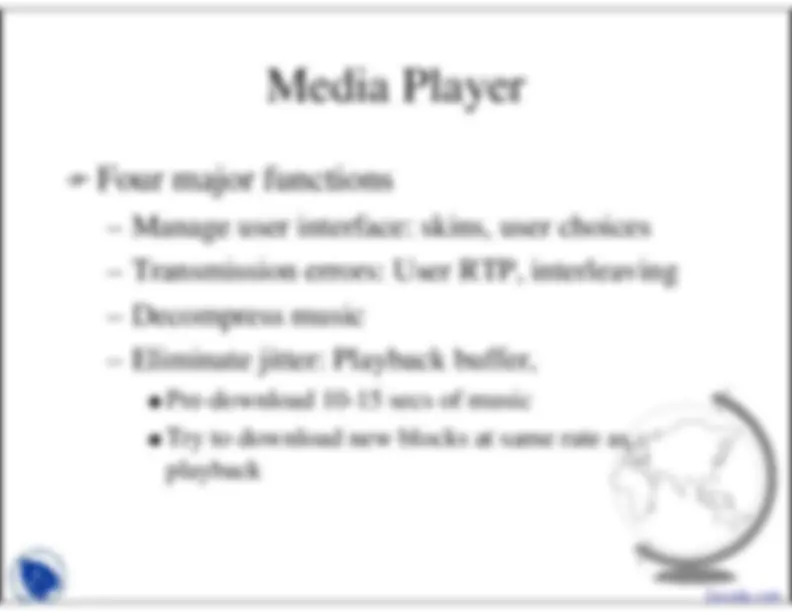

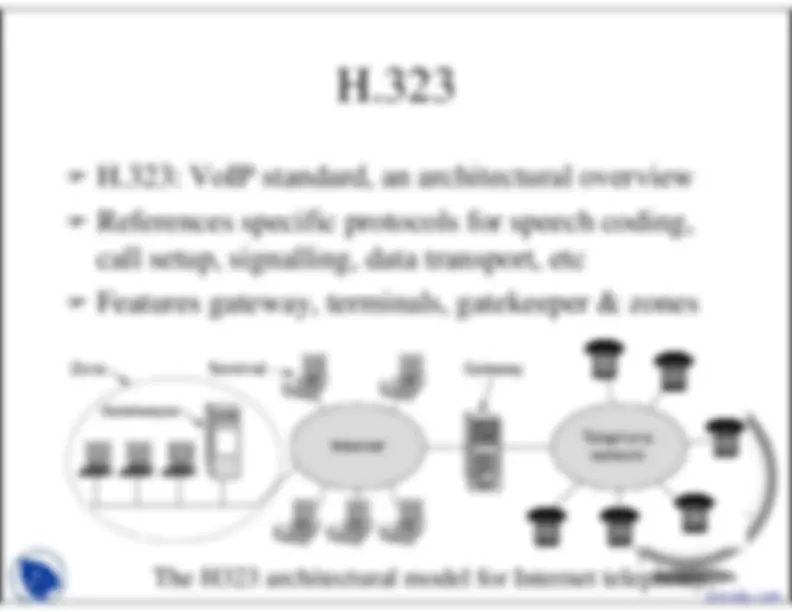
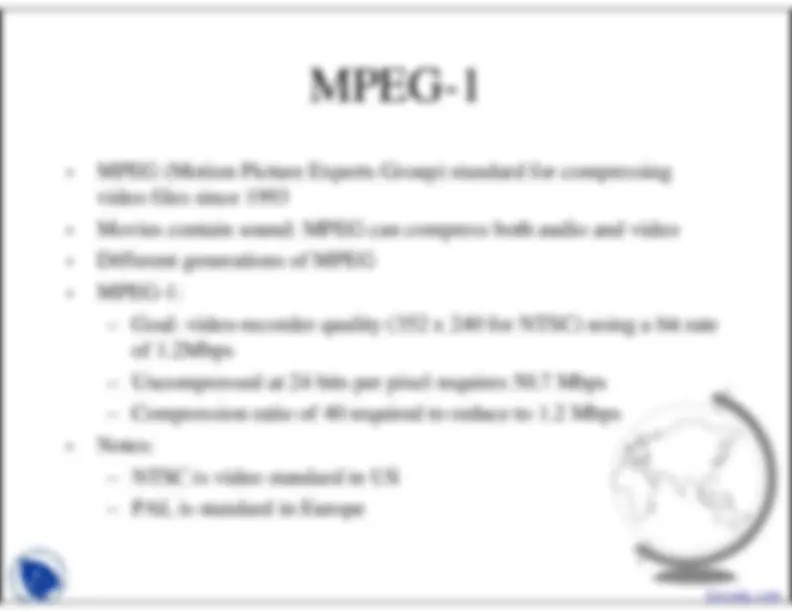
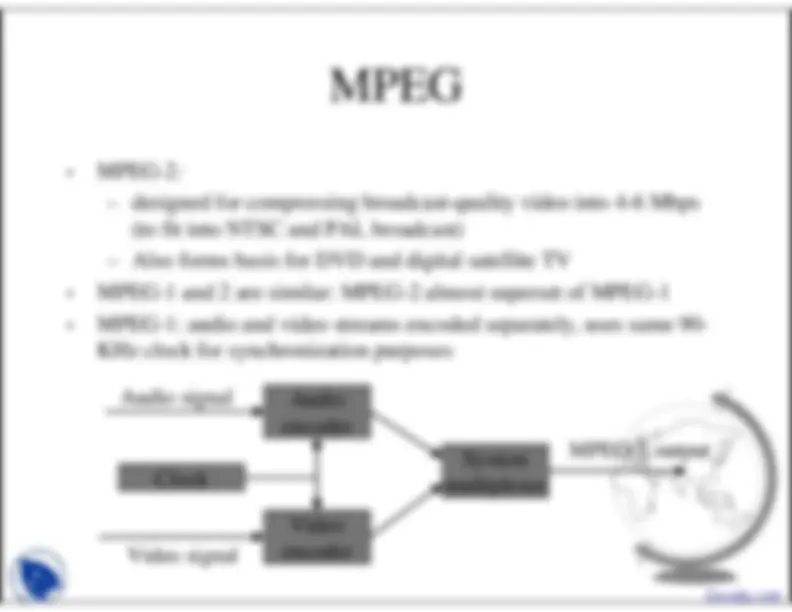
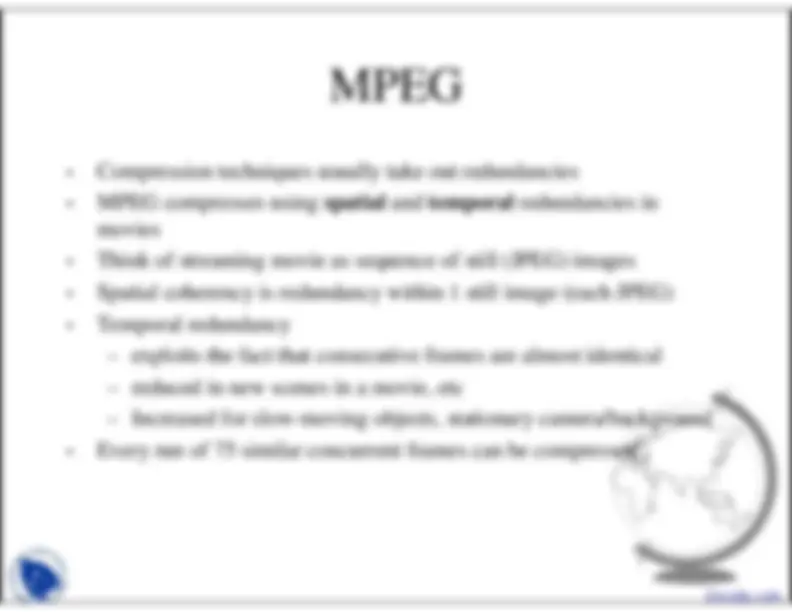
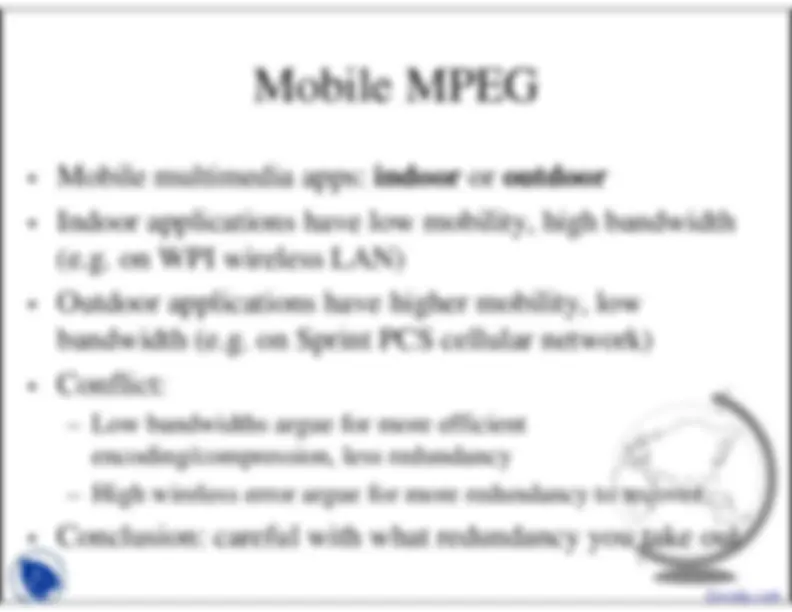
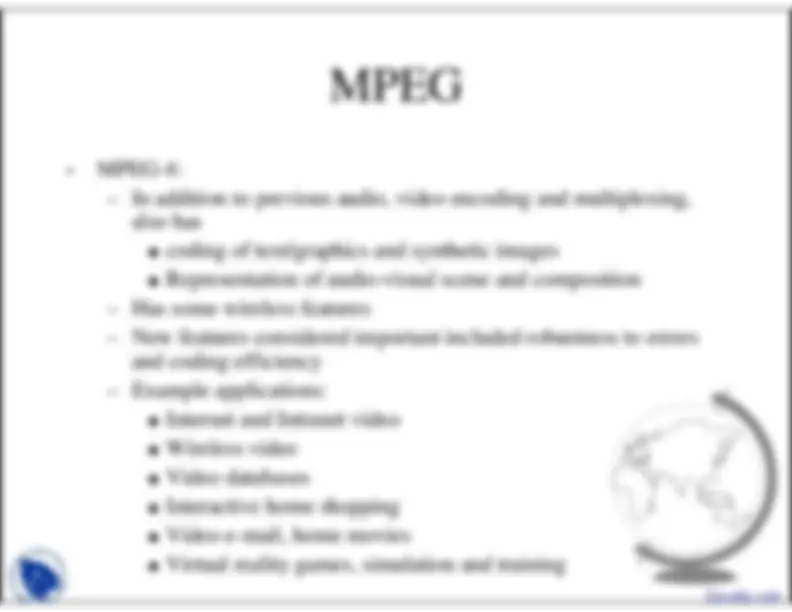
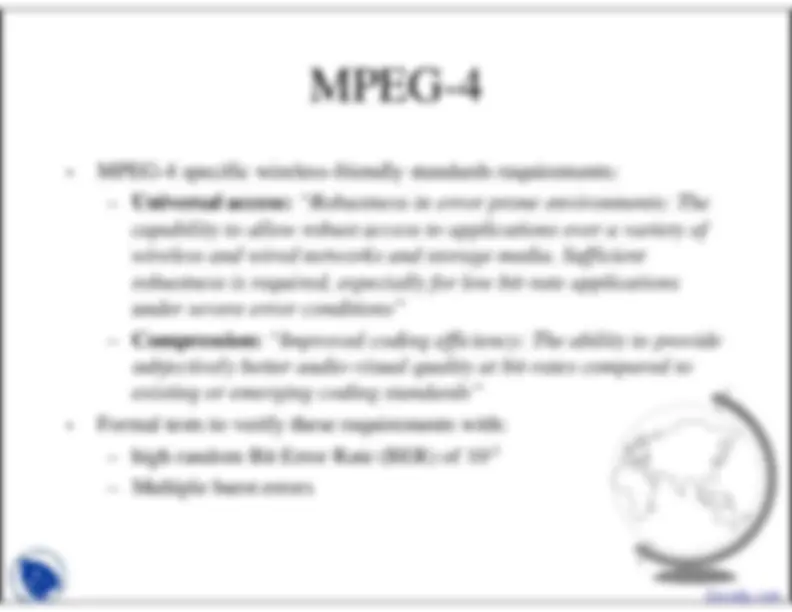
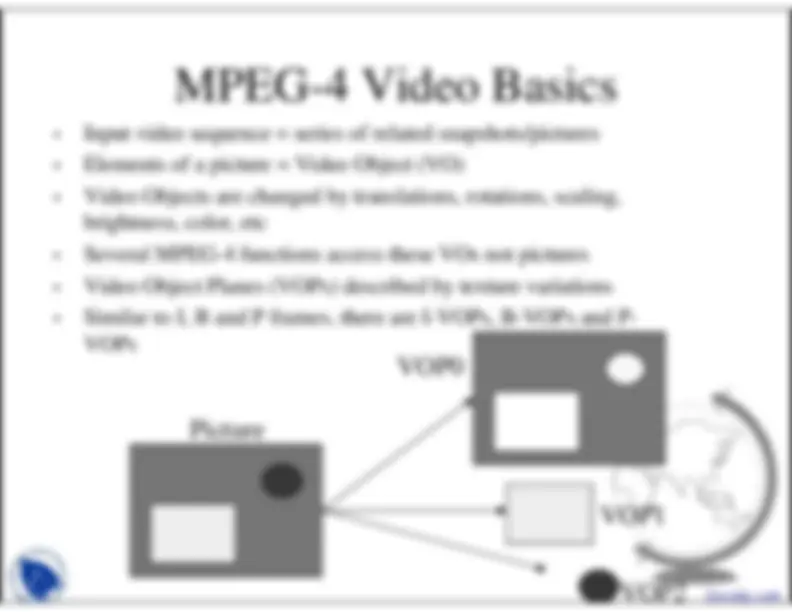
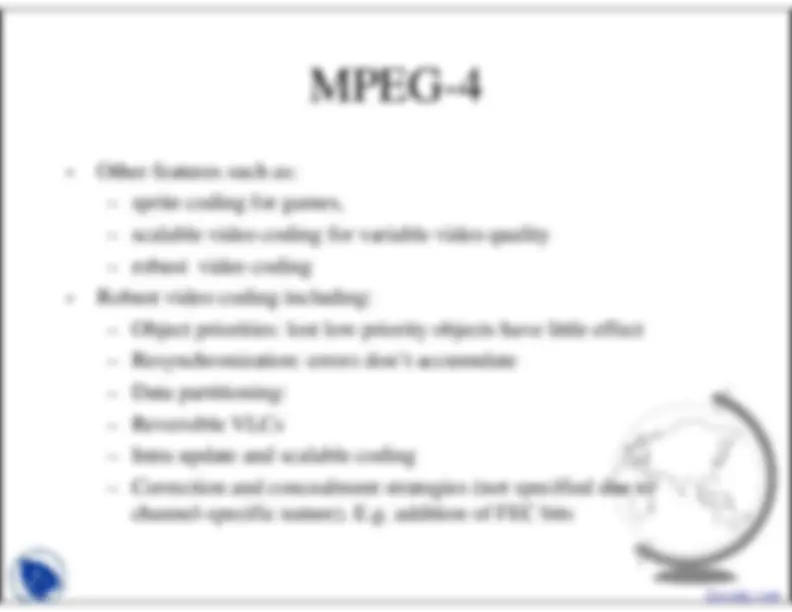


Study with the several resources on Docsity

Earn points by helping other students or get them with a premium plan


Prepare for your exams
Study with the several resources on Docsity

Earn points to download
Earn points by helping other students or get them with a premium plan
Community
Ask the community for help and clear up your study doubts
Discover the best universities in your country according to Docsity users
Free resources
Download our free guides on studying techniques, anxiety management strategies, and thesis advice from Docsity tutors
Main points of Local and Wide Area Networks are: Application Layer Two, Multimedia, Human Ear, Converts, Audio, Samples, Waves to Digital, Times Per Sec, Audio Compression, Reduces Bandwidth
Typology: Slides
1 / 22

This page cannot be seen from the preview
Don't miss anything!















Waveform coding:
fourier transform, then encode
frequency components
Exploit flaws of human ear
Encoded form is different but
sounds
same to
human ear
)
Pre-download 10-15 secs of music
Try to download new blocks at same rate asplayback
The H323 architectural model for Internet telephony.
mailto
-^
MPEG (Motion Picture Experts Group) standard for compressingvideo files since 1993
-^
Movies contain sound: MPEG can compress both audio and video
-^
Different generations of MPEG
-^
Goal: video-recorder quality (352 x 240 for NTSC) using a bit rateof 1.2Mbps
-^
Uncompressed at 24 bits per pixel requires 50.7 Mbps
-^
Compression ratio of 40 required to reduce to 1.2 Mbps
-^
Notes:–
NTSC is video standard in US
-^
PAL is standard in Europe
-^
designed for compressing broadcast-quality video into 4-6 Mbps(to fit into NTSC and PAL broadcast)
-^
Also forms basis for DVD and digital satellite TV
-^
MPEG-1 and 2 are similar: MPEG-2 almost superset of MPEG-
-^
MPEG-1: audio and video streams encoded separately, uses same 90-KHz clock for synchronization purposes
Audioencoder Videoencoder
System multiplexer
Clock Audio signal Video signal
MPEG-1 output
-^
MPEG-1 output consists of four kinds of frames:–
I (Intracoded)
frames:
self-contained JPEG-encoded still pictures
Act as reference, in case packets have errors, are lost or streamfast forwarded, etc
P (Predictive)
frames:
Block-by-block difference with last frame
Encodes differences between this block and last frame
B (Bi-directional)
frames:
Difference between the last or next frame
Similar to P frames, but can use either previous or next frameas reference
D (DC-coded)
frames:
Encodes average values of entire block
Allows low-res image to be displayed on fast-forward
-^
-^
In addition to previous audio, video encoding and multiplexing,also has
coding of text/graphics and synthetic images
Representation of audio-visual scene and composition
Has some wireless features
-^
New features considered important included robustness to errorsand coding efficiency
-^
Example applications:
Internet and Intranet video
Wireless video
Video databases
Interactive home shopping
Video e-mail, home movies
Virtual reality games, simulation and training
-^
MPEG-4 specific wireless-friendly standards requirements:–
Universal access:
“Robustness in error prone environments: The
capability to allow robust access to applications over a variety ofwireless and wired networks and storage media. Sufficientrobustness is required, especially for low bit-rate applicationsunder severe error conditions”
-^
Compression:
“Improved coding efficiency: The ability to provide
subjectively better audio-visual quality at bit-rates compared toexisting or emerging coding standards”
-^
Formal tests to verify these requirements with:–
high random Bit Error Rate (BER) of 10
Multiple burst errors